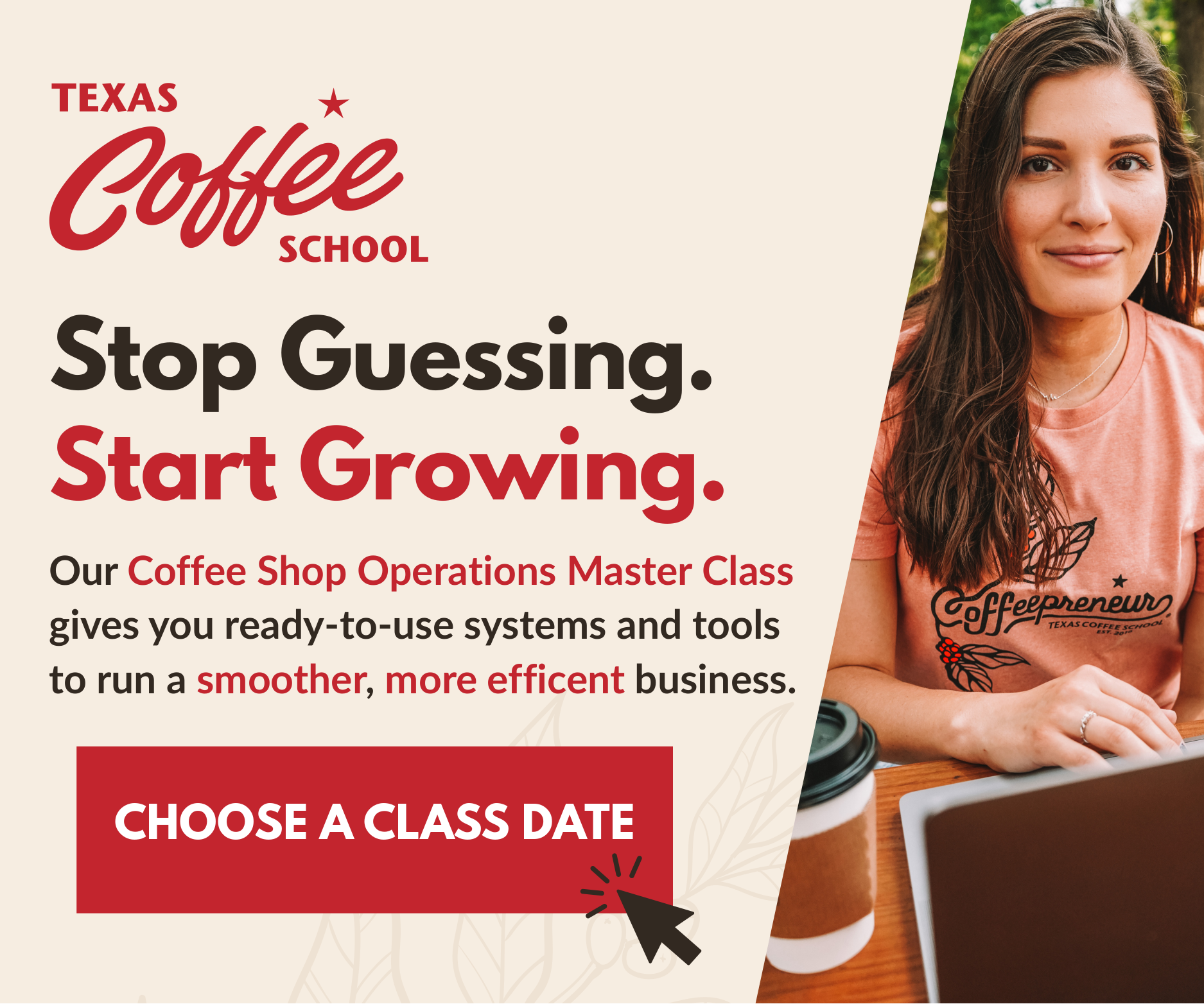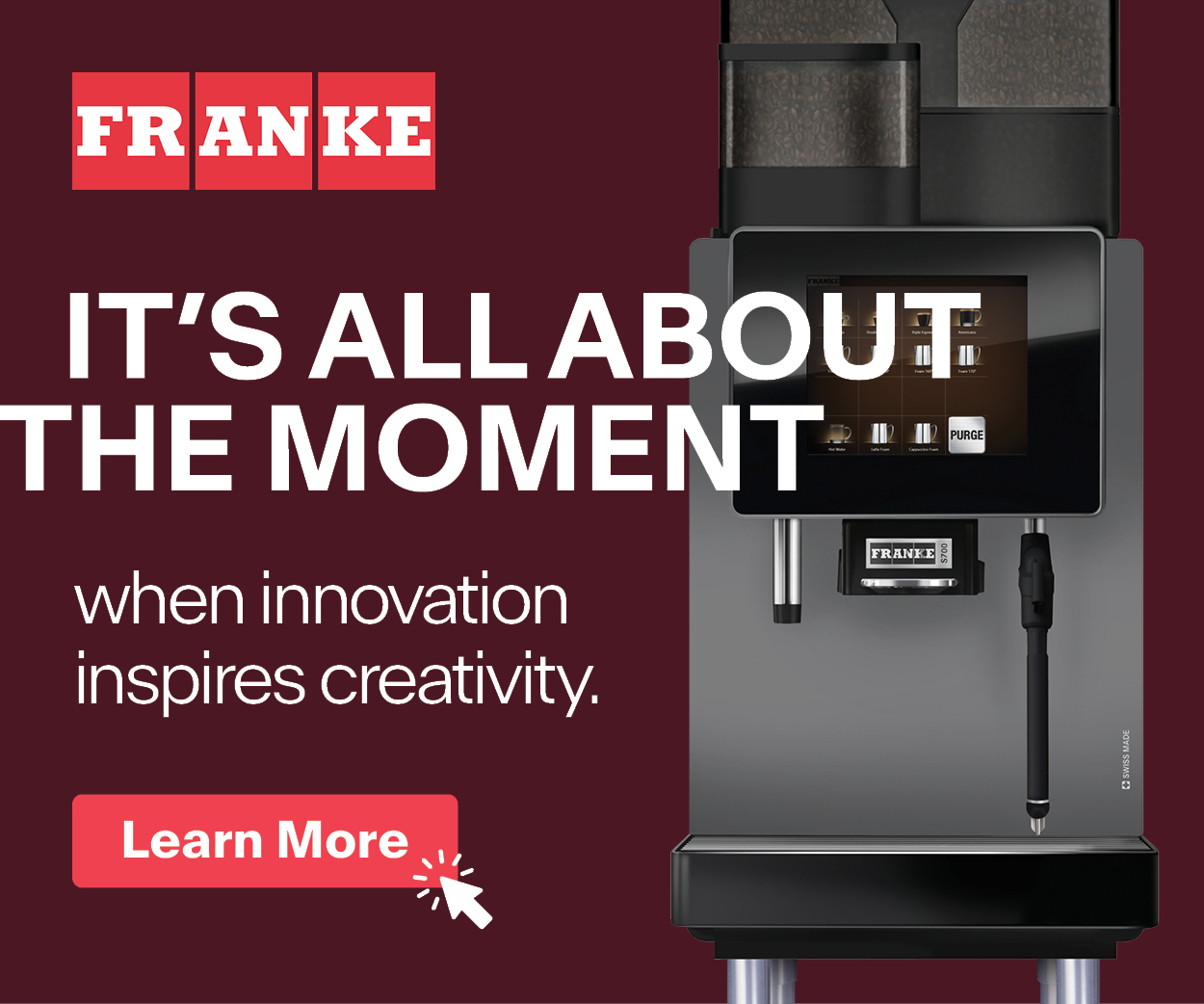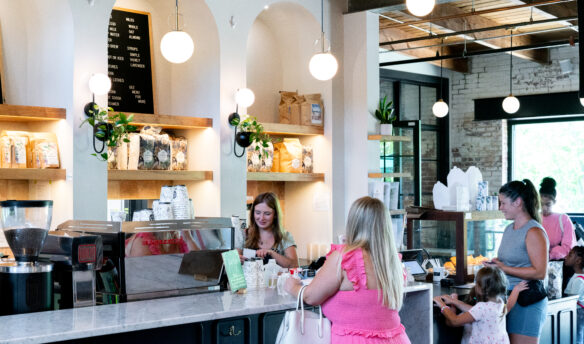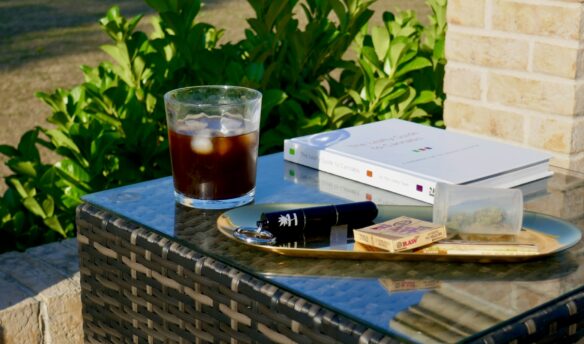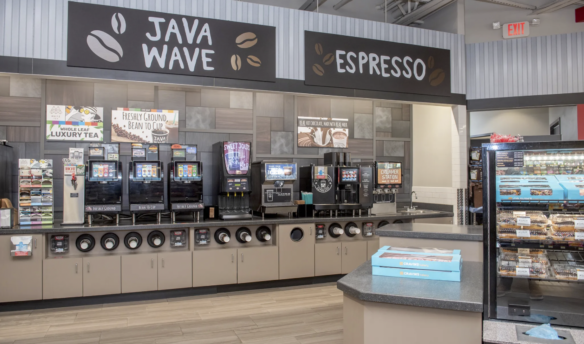These days, coffee shop menus feel maximalist. Many have grown to feature seasonal specials, long lists of syrups, and a wide range of custom drinks.
But at Corvus Coffee Roasters and Courier Coffee Roasters, the menus are comparatively pared-back. Instead of a dizzying lineup of flavors, there’s just a short list of staples: lattes, cappuccinos, espresso, brewed coffee. The classics are there, and not a whole lot more.
Corvus, which opened in 2010 and now has six locations around Denver, offers just a handful of espresso drinks, with most of its menu dedicated to single-origin pour-overs. Courier, which has operated out of its Portland space since 2006, also roasts its own coffee and keeps its menu centered on espresso drinks and brewed coffee.
This approach is modest by design, and fits intimate shops with slower-paced service. Both Corvus and Courier show how keeping their menus simple makes coffee the foundation of their businesses.
What the Menu Communicates
Phil Goodlaxson, founder of Corvus Coffee, sees the menu as one of the clearest ways to communicate what a cafe values. “The menu is one of the primary ways to convey exactly what you do if it’s done well,” he says.


At Corvus, that means putting coffee front and center. Its menu is laid out more like a brewery’s taplist than a cafe board: Much of the space is reserved for single-origin offerings, each of which listed by the farm or producer rather than just the country. Goodlaxson has worked with many of the same producers for more than a decade, and he wants that longevity to come across to customers.
By leading with farm names on the menu, he also hopes people will start to follow them the way they might follow a favorite brewery or winery. “If you come in a lot and keep ordering coffee year over year, hopefully you start to want a particular farm’s coffee,” he says. “When that happens, it gives farmers more value and more control instead of coffee being a commodity.”
At Courier Coffee, owner Joel Domreis limits flavoring options to a single syrup—housemade vanilla—while keeping the rest of the menu centered on brewed coffee, espresso drinks like cappuccinos and lattes, and a handful of other staples such as cold brew and hot chocolate.
“Having a huge menu is really exciting for people, to have all these options they can choose from,” he says. “But having it less complicated makes people focus on the coffee itself.”
What Happens Before a Drink Makes the Menu
At Corvus, every new addition to the menu is weighed against the company’s core identity as a roaster. When customers began asking for matcha, Goodlaxson hesitated at first. “Everything that we add to the menu, we need to view as potentially detracting from the clarity of what we do really well,” he says.
Ultimately, the demand was strong enough that it made sense to give it a try. “It adds a lot of value for people, so let’s test it out,” Goodlaxson says. After a lot of internal deliberation, Corvus introduced matcha lattes as a seasonal drink in July 2025. The choice met a clear need for non-coffee drinkers without distracting from the company’s coffee priorities. It helped that the team was confident they could source quality matcha from their existing tea supplier.


At Courier, Domreis has never stocked the rows of syrups common in other cafes. While he has experimented with creating a caramel syrup, he hasn’t landed on a recipe he’s satisfied with yet. For him, it’s better to wait than to add something that doesn’t meet his standards. That restraint has shaped how customers see the shop, sometimes in ways he didn’t expect. “People tell me that it makes us more of a serious coffee shop,” he says. “Of course I want to be that, but it wasn’t my intent.”
It’s an outlook that extends to his staff too. “I know it matters a lot to the people who want to work for us, to have such a simple menu,” Domreis adds. For baristas, fewer options means fewer distractions, and more space to focus on the staple drinks.
How the Menu Shapes Baristas’ Work
At Corvus, the structure of the menu helps direct attention where Goodlaxson believes it matters most: the coffee. The espresso lineup usually includes the roaster’s flagship blend, along with other single-origin coffees that can be pulled as espresso, plus a decaf. “Our baristas spend a lot of time dialing in their espresso,” Goodlaxson says. “They have three espressos they dial in every day, multiple times a day—sometimes up to four hours just to get everything right.”
Baristas at Corvus use refractometers regularly to measure extraction, not just as a one-time check but multiple times throughout the day. They revisit the coffees together, tasting and tweaking as they go. “If you get one thing right, make sure the coffee’s dialed-in,” he says.


For Goodlaxson, a smaller menu isn’t about exclusivity. He wants Corvus to feel approachable for anyone who walks in, whether they already follow specialty coffee closely or not. Winning over a customer who’s never paid attention to single-origin coffee is more meaningful to him than competing for the attention of those already immersed in the scene. By keeping the emphasis on quality, he hopes to spark curiosity that can grow over time.
At Courier, the workflow is shaped by service style. Domreis and his team avoid an order-and-pickup system, choosing instead to remember customers’ drinks and bring them out directly. That choice makes the experience calmer for both sides of the bar, he says. Rather than clustering at a counter waiting for names to be called, customers can sit down, knowing their drinks will find them.
Baristas, meanwhile, focus on remembering faces and orders instead of rushing through a queue. “Things are so chaotic as it is in a coffee shop,” Domreis adds. “We’re trying to treat coffee like something special.”
Simple means more than keeping the menu short. At Courier, Domreis applies the same philosophy across the business, from limiting the pastry case to three daily staples to packaging beans in paper bags and delivering them by bicycle. After all, “It’s very difficult to do 30 things very well,” he says.




